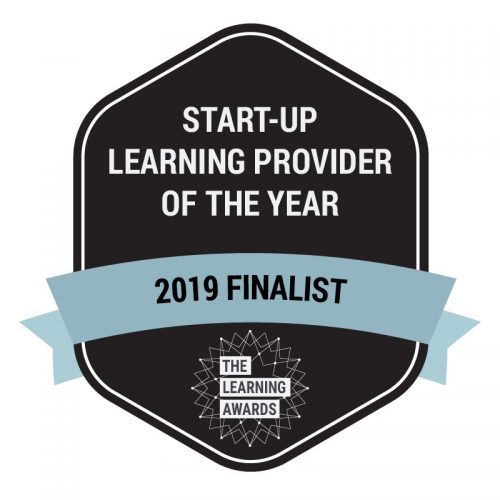As companies are starting to re-introduce people back into their workplaces there will be a range of considerations around whether any PPE is needed, how social distancing will work and what percentage of the workforce should actually be invited back. These are all be very practical considerations and will take some planning. But are these the only challenges organisations and leaders will face over the coming weeks and months?
In a recent round-table discussion we held with some of our clients the topic came around to this type of planning, and it was at that point that someone dropped the following question into the conversation. “But do they want to come back? That’s the challenge!” Food for thought and a question I would like to explore here.
As we enter July it’s worth recognising that there will be some people who have spent more time in 2020 working from home than they have working ‘in the office’ (or your equivalent!). Back in March pretty much everyone was working through the implications of moving their place of work to a home office, spare bedroom or dining room table. This was a time of uncertainty for many people – how would this work, how would they balance getting work done with home schooling, how would they stay in touch with colleagues? And then there were also the people being retained under the furlough scheme (nearly 9 million recorded at the start of June) who were looking at being at home with the uncertainty of when they may be asked to return to work.
Nearly four months on, the ‘how will it work’ has become a thing of the past as it has worked. People have found their working space, they’ve found a way to balance the conflicts of their work and home schooling and they now have well established routines. Working from home, or being furloughed, has been normalised.
And now these people are starting to be asked to break these established routines for something that will resemble their old routines. What thoughts and feelings might this trigger and how, as leaders, might we need to engage people at this time of major change – the second one people will have faced this year.
The thinking that people have leads to them taking certain actions, which in turn will give results (This is one of the core principles that we use with our clients at Thinking Focus: Thinking = Actions = Results). We also know that much of our thinking is done by the subconscious, even though we are more aware of the conscious thoughts that we have, and there are two systems at work: one fast emotional thought process, and a slower, rational thought process. These fast emotionally driven thoughts can be reactive, and lead to our thinking being incredibly unhelpful, trapping in negative world views that can hold us back. Right now, a variety of these thoughts will be being triggered by talk of returning to the workplace.
The posing of the “But do they want to come back?” question led the discussion at the round-table to exploring the different elements of this, noting that there are a number of key considerations for leaders, coming out of the current situation.
The concerns that people may be having will be wide ranging. ‘C’ – who works for a major sports brand – commented “We recently did a survey of everyone to ask, ‘What are your concerns about coming back to work?’ And it was around childcare. That was the big one. And it was around public transport, because we’ve got quite a lot of people who live in city centre coming into where we are. And then obviously shielding issues were mentioned.” And while these were expected, one curveball also came from this survey. ‘C’ mentioned “the one thing that just popped up, was ‘but I have been able to work flexibly. Can I carry on? Do I need to come into the office?’ and it’s come up so many times on all the different responses.”
So aside from some concerns that many leaders have probably thought about, there may be this underlying ‘do I need to go back to the office?’ narrative coming through for people. One of the thoughts put forward by one of our team was “I wonder if the supermarket syndrome comes into play here, you know, you join a queue and only a few people are allowed in. And people seem to conform to all of that social distancing, and then as soon as you’re in the supermarket, it all goes out the window because everybody’s leaning across you. I wonder if that is the concern for some people about coming into the office – will other people respect the distancing?”
There are some known cognitive biases that impact the way we judge our own and others capabilities. They may be playing out here, with some people overestimating their own ability to stick to rules, while at the same time underestimating the ability of others to do the same (Dunning-Kruger effect).
‘A’ from a global Medical technology company mentioned this very thing had come up in a conversation with a colleague. “This manager was one of the ones that tells you this feels uncomfortable. And when she finally could kind of put it into words, what she said was that she knows she’s been seeing more people, but she knows them really well. So she knows that they’ve been following the government guidelines and she knows that they are regularly washing their hands and they won’t invade her space, but she doesn’t feel it’s safe coming back into an office where she doesn’t know those people as well, she doesn’t know what their home environment is like, she doesn’t know who they’re exposed to. So there’s that lack of trust and nervousness, what if somebody walks into your two metres of space and you’re like, what are you doing?”
And of course, if this lack of social distancing happens, will people turn around to a colleague and ask them to ‘back off’ and stay further away?
As ‘C’ from an international print and application company simply put it “And people are not robots, they won’t necessarily follow all rules all the time. And, that’s just not intentional.” Which in the case of their organisation has led them to form the view that they can’t see more than 25% of the workforce being asked to come back to the workplace, to start with.
However, as ‘G’ from a major healthcare service provider put it “I do think it will be safer than public environments like supermarkets or wherever. We’ve got all the tape on the floor, the different measurements (have been made) and we’ve actually invoked a one way system in the building as well.”
So, does this highlight a dual role for leaders at this time? The first being the practical side of getting people back in to the workplace and the second being building the trust for those that are being asked back in, through reducing numbers, through putting practical measures in place and through reassuring people that all that can be done has been? I think so, while recognising that for some leaders the practical side may be easier than ensuring people are reassured.
A more general question to consider is will there be people who are scared of coming back, people who are anxious about this? From our discussions the general feeling was that yes, there will be people who feel this way but the hope is that this will be a transient feeling, as people start to get back to the workplace they will see things are in place, they will see their colleagues working to these new ways and they will, in turn, feel more confident. This fear may well come from the fact that working from home, or being furloughed, has been the ‘new norm’ for many people and people are in safe ‘bubble’ that they feel in control of. Going back to the workplace changes this, with a whole set on unknowns about the workplace and colleagues.
As leaders, it is important that we take time to rebuild the trust that used to exist for the workspace. While it might sound strange to talk about trust in the office being reduced by working from home, the last few months have changed our relationship with a lot of spaces we used to frequent, and we have be subjected to a lot of messaging that has told us to stay away from some places where we used to spend a lot of time. For some people trust will take some time to return.
The office used to be a safe place. Firstly, it was probably a clean space that we did not associate as being a risk to personal health. It was a place where we accepted that we had to cohabit with other people, sharing facilities, working with different groups and using different spaces. We also knew how it worked, the social rules governing the workplace are so clearly defined that most of us have never even had to think about them. All of this has changed. The workplace is now dangerous, it may cause us to interact with people who might make us ill. While four months ago someone sitting at your desk might have felt inconvenient, it wasn’t really a problem. Now the desk may need to be cleaned. For most people, the office has become a foreign place, we no longer know how it works.
To rebuild trust we need to focus on the logic and rules (cognitive trust) and the interaction between people and the feelings that this may create (affective trust). The rational part of this will be easy for most leaders, detailing the new rules, signs on the floor, one-way systems and limits to the numbers of people in at any time.
The affective trust required is more complex. To rebuild this we need our teams to know that we understand their anxiety in coming back, creating psychological safety around the first visit back (such as a trial return). Leaders need to be responsive to the inevitable incidents that will occur, especially around social distancing measures. If we can role model the new behaviours and quickly deal with rule breakers, we can help our teams normalise the new working rules and quickly restore trust in the office.










